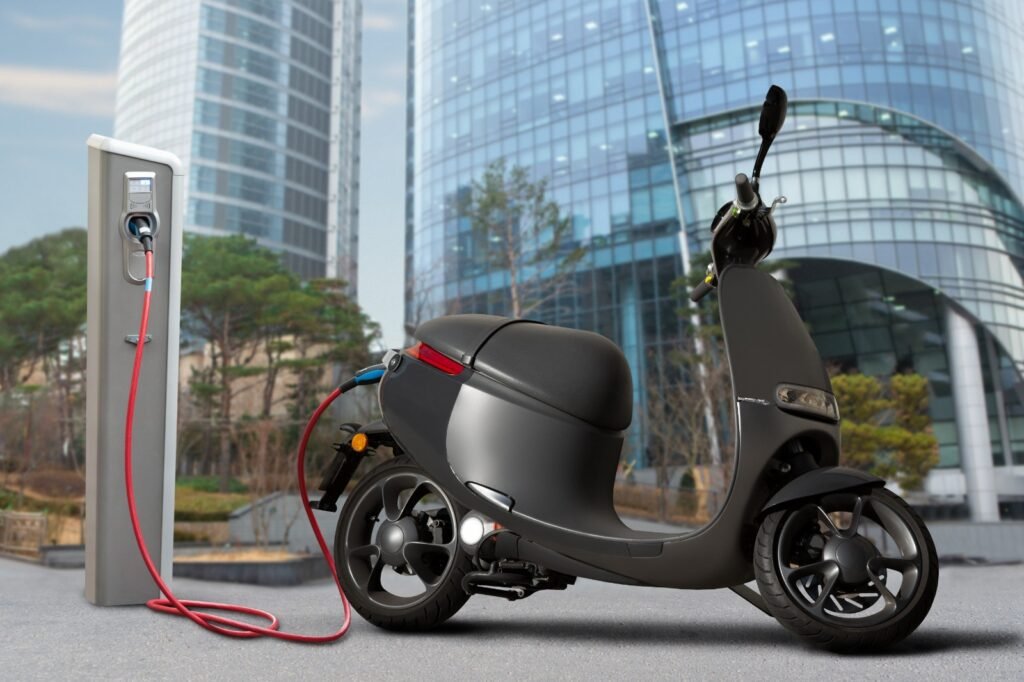As electric vehicles (EVs) gain popularity, the battery technology that powers them evolves, with innovations in the charging process making it easier and more convenient. While EV charging is getting more user-friendly, there is still potential for advancement. According to a recent estimate, the EV charging solutions market would be worth $217.06 billion by 2030, with a 30.6% CAGR from 2022 to 2030. This expansion is being fueled by rising EV usage, government assistance, and continued technology breakthroughs. Because EVs play such an important role in lowering emissions and promoting sustainability, staying up to date on charging trends is critical for a cleaner future.
EV Charger Technology Trends
1. Ultra-Fast Charging Stations
In 2023, the EV charging landscape is transforming with the emergence of ultra-fast charging stations, delivering up to 350 kW of power. This game-changing technology drastically reduces charging times, making long-distance EV travel more convenient. Thanks to advancements in battery tech and a rapidly expanding global network of these high-speed stations, EV drivers are adapting seamlessly to a more efficient and enticing electric mobility future.
2. Smart EV Charging
2023 marks a turning point for EV charging, as smart charging solutions take centre stage, revolutionising the user experience. These advanced systems, powered by IoT and data analytics, optimise energy consumption, lower charging costs, and ease grid stress. Smart charging stations, equipped with Wi-Fi and remote control features, make charging more than a transaction; it becomes an enriching experience. Users can monitor their vehicle’s status, adjust settings, and even enjoy pay-per-use options.
These systems are further divided into User-Managed Charging, giving users control, and Supplier-Managed Charging, where providers adapt to prevent grid overloads. Smart EV charging aims to make powering up your EV more convenient, efficient, and cost-effective, ushering in a new era of electric mobility.
3. Vehicle-to-Grid Technology (V2G)
In 2023, Vehicle-to-Grid (V2G) technology emerged as a game-changing trend for electric vehicles (EVs). V2G enables EVs not only to draw power from the grid but also to give back surplus energy, enhancing grid stability and balancing supply and demand. This bi-directional energy flow benefits both EV owners, who earn rewards for their contributions during peak demand, and the electrical grid’s overall efficiency and resilience. By turning EVs into mobile energy storage units, V2G has the potential to revolutionise energy distribution, making EVs even more attractive as a sustainable and financially rewarding choice for consumers.
4. Solar-Powered Charging Stations
2023 brings a surge in solar-powered EV charging stations, marking a shift towards sustainable energy solutions. These stations utilise solar energy to charge EVs, reducing dependence on conventional power sources and significantly lowering the carbon footprint of the charging process. As solar technology continues to advance and become more cost-effective, we can anticipate a growing presence of solar-integrated charging stations in public spaces and businesses dedicated to environmental sustainability.
5. Solid-State Batteries
Solid-state batteries are a game-changer in energy storage, offering higher energy density and faster charging. With the ability to reach an 80% charge in just 15 minutes, they outperform traditional lithium-ion batteries. Enhanced safety features make them a safer choice for electric vehicles (EVs). As they become more commercially viable, expect solid-state batteries to significantly boost EV ranges, making electric mobility more attractive.
6. Bidirectional Charging Systems
Bidirectional charging systems redefine the potential of electric vehicles (EVs) in 2023, facilitating a two-way flow of electricity. These systems not only enable EVs to draw power from the grid but also discharge energy, offering impressive versatility. With an EV serving as an energy source, a typical household can rely on it for emergency power backup, supporting the home for up to two days. Furthermore, for smart energy management, an EV can power a home for an entire week. This innovation underscores the growing role of EVs in enhancing grid stability and sustainability, aligning perfectly with the global shift towards cleaner energy solutions.
7. EV Roaming or eRoaming
EV roaming, a pivotal trend in 2023, unlocks a “charge-anywhere” experience for electric vehicle (EV) owners. With the convenience of a self-service mobile app, users can access charging networks from multiple providers seamlessly, ensuring they can charge their EVs wherever they are, regardless of their home eMobility provider. This fosters user confidence and promotes the widespread adoption of electric mobility, as charging transactions seamlessly integrate into users’ monthly invoices, enhancing the overall customer experience on the road.
8. Charging Availability
As the electric vehicle (EV) population grows, finding available charging stations becomes a challenge, often due to cars left parked after charging. To combat this, parking stations are deploying sensors to detect station blockage, alerting drivers via an app and marking stations as occupied. While not a complete solution, it’s an improvement. Moreover, EV drivers now receive push notifications when charging completes, along with reminders to clear the station or face extra fees from the Charge Point Operator (CPO). Government support is equally crucial; in 2023, more countries are investing in charging networks, offering tax incentives, and enforcing regulations to expedite the shift to electric mobility.
9. EV Charging Apps
EV charging apps are a pivotal part of the evolving landscape in 2023, streamlining the user experience with real-time data on charging station locations and availability. These apps not only enable reservations but also facilitate convenient payments, making them essential for the growing electric vehicle community. Their widespread adoption significantly contributes to the ongoing trends in EV charging solutions, enhancing accessibility and user convenience.
In conclusion, the trends in EV charging solutions for 2023 promise to enhance the adoption of electric vehicles, making them more accessible, efficient, and sustainable. As governments, industries, and consumers embrace these innovations, the transition to electric mobility will continue to accelerate, ultimately contributing to a greener and more sustainable future for transportation.


